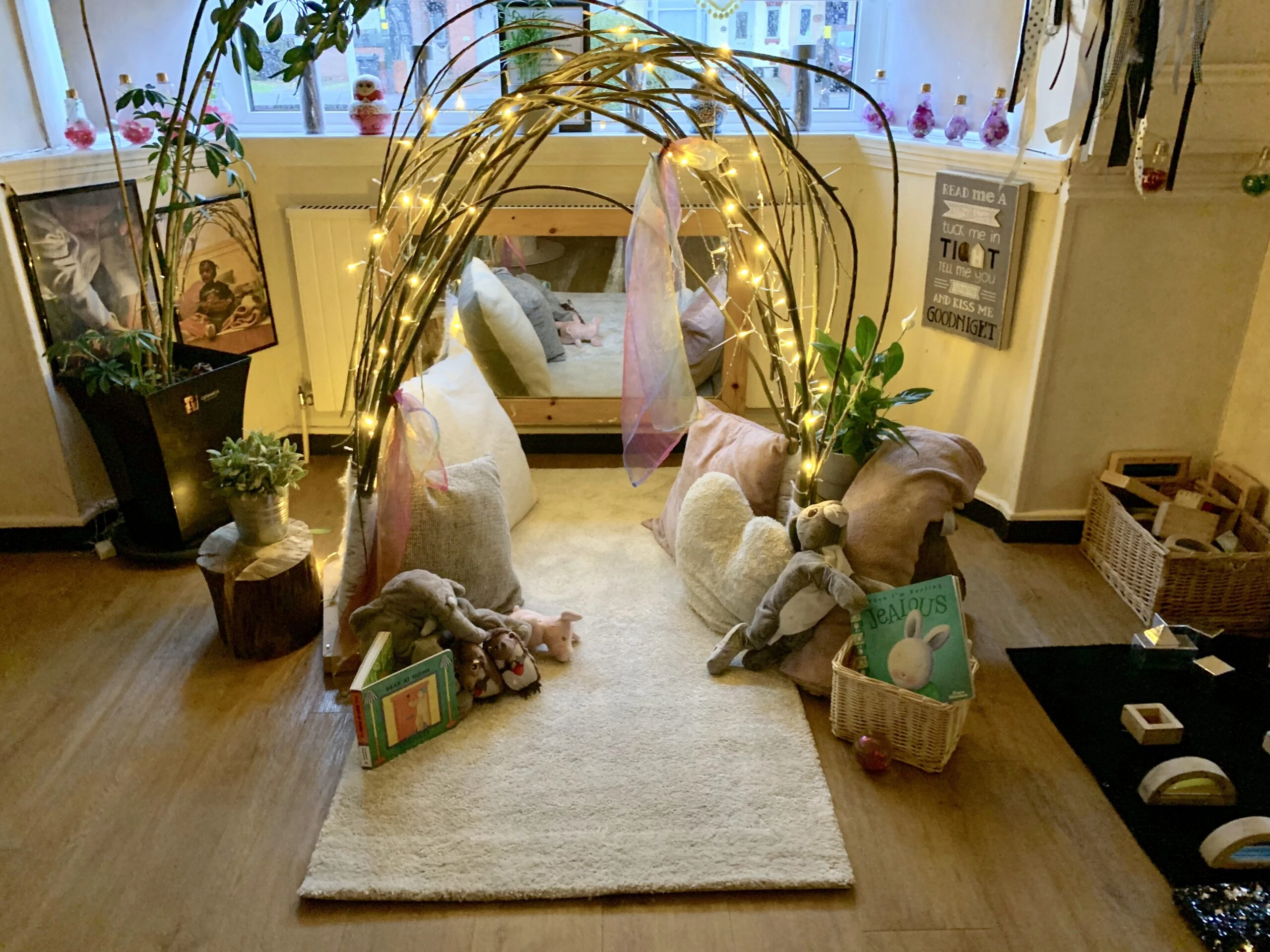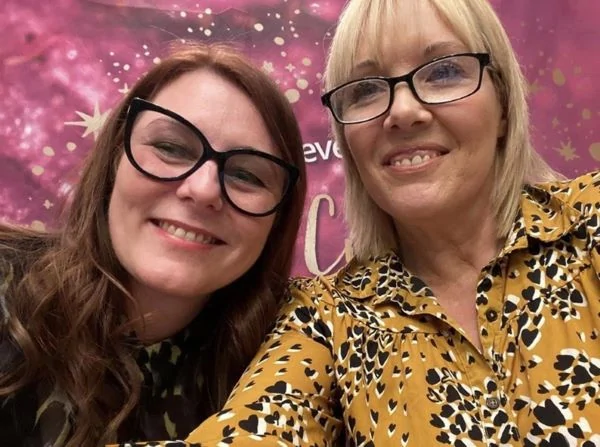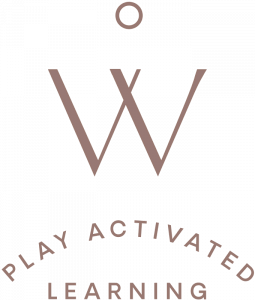Have you ever looked at your environment with fresh eyes?
Have you ever got down on your knees and viewed it through the eyes of a child?
What does it feel like to be a child in your setting?
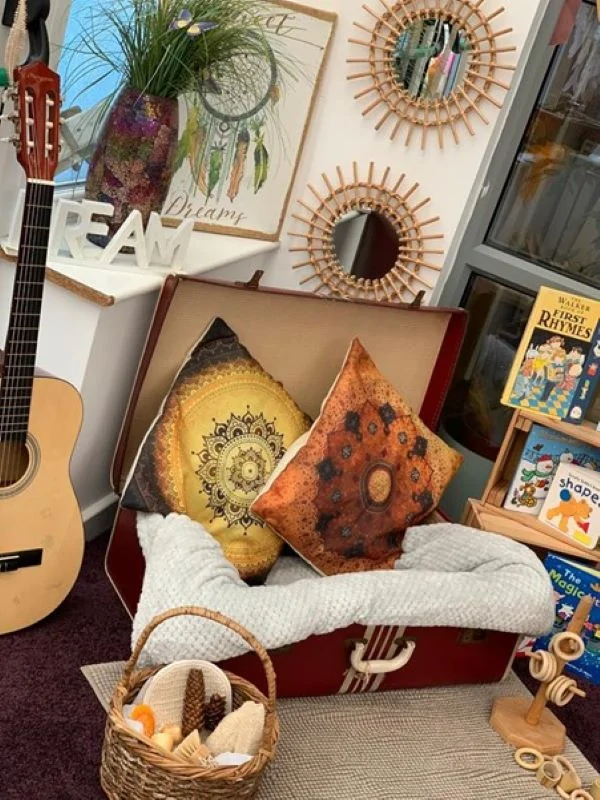
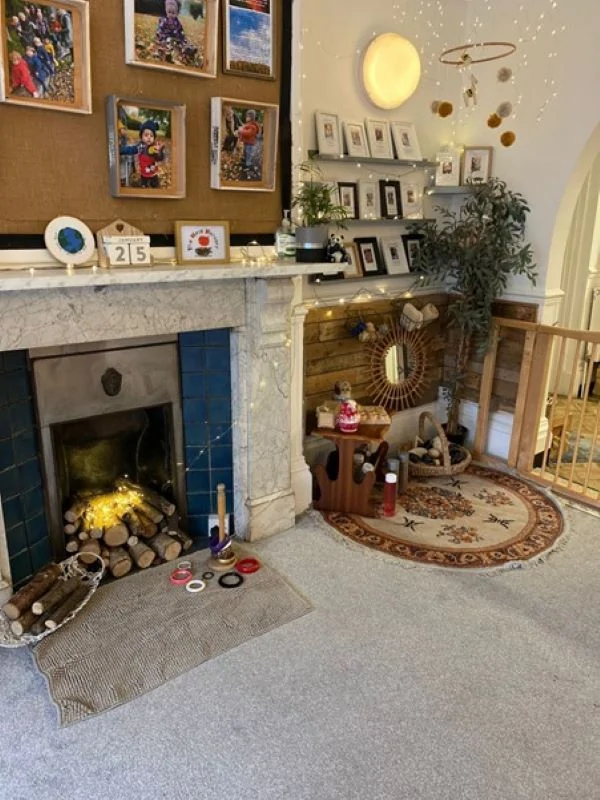
Environments don’t have to be a primary colour explosion to appeal to little children. Play spaces don’t need to be jam packed with manufactured plastic toys, for children to learn and play!
We advocate that an environment “should feel like an extension of home and not a watered-down version of school.” – The Curiosity Approach®.
Our little babies and infants are not meant for institutionalised environments, they need to feel loved, nurtured, and secure in a home-from-home setting. Therefore, as educators, we need to provide places that feel cozy and comfy, with soft furnishings, cushions and drapes, places to sit and snuggle, to feel a sense of belonging and calmness.
Entwined in The Curiosity Approach® pedagogy is inspiration taken from Loris Malaguzzi and the Reggio Approach, to view the environment as ‘the third teacher’, whereby physical places have the potential to influence what and how children learn.
We know the physical environment is never just the backdrop to the curriculum; it is an integral part.
A powerful environment frees our educators to interact with the children, so how to create such a place?
Characteristics of a wondrous engaging curious environment
Open-Ended Resources
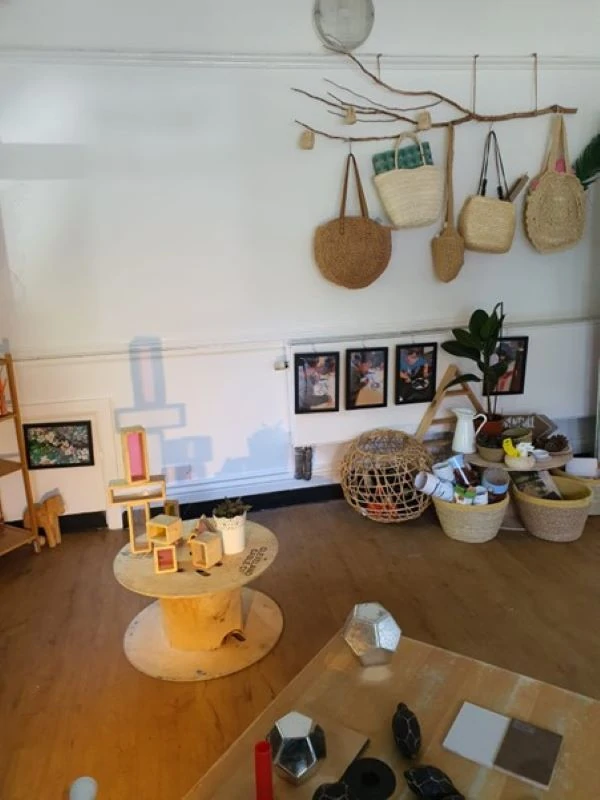
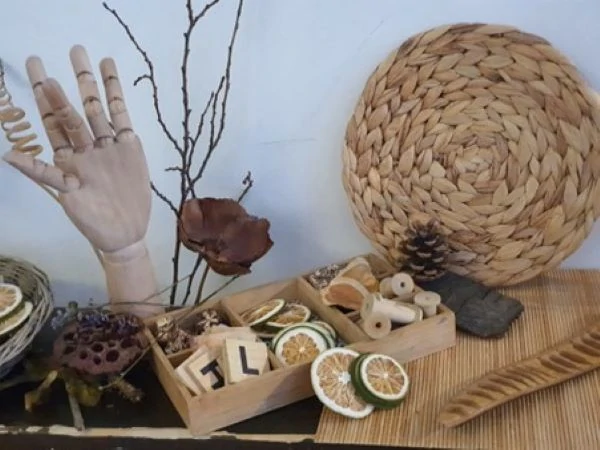
Your environment should provide a wealth of large and small open-ended resources, which allow children to be the directors and “pilots in their own play.”
We must show value to the play space in which the children engage! It is a subliminal message that conveys how much educators have thought about and value the children within. Only through the availability of thoughtfully well-maintained and presented resources will children be curious to come and play. Curiosity is the spark that ignites all learning
A Flexible Balance of Experiences
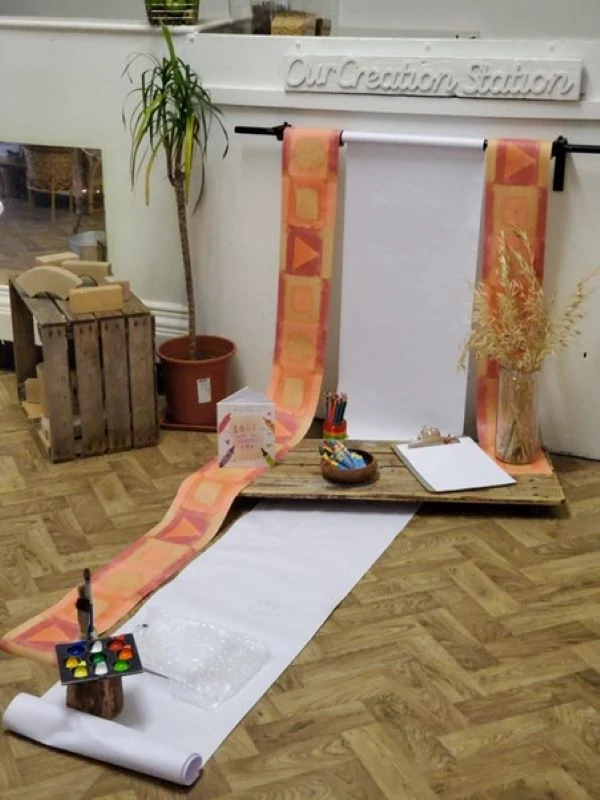
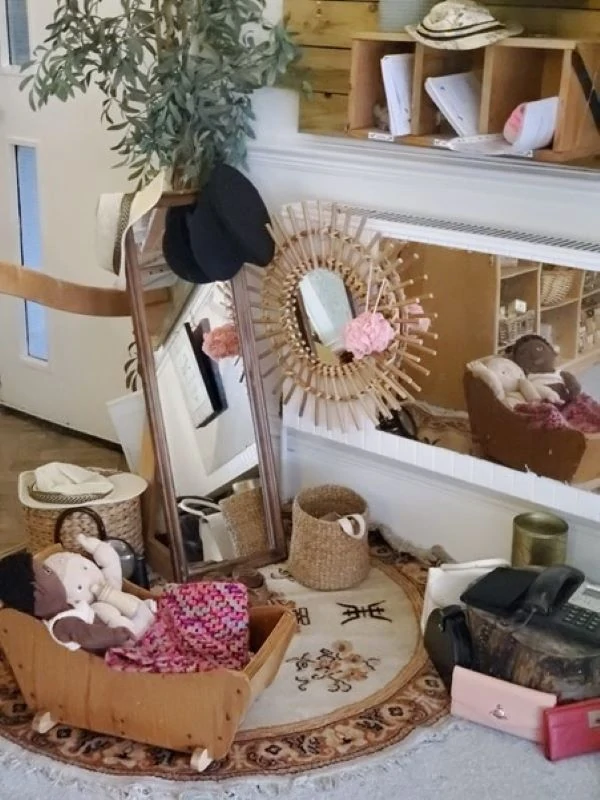
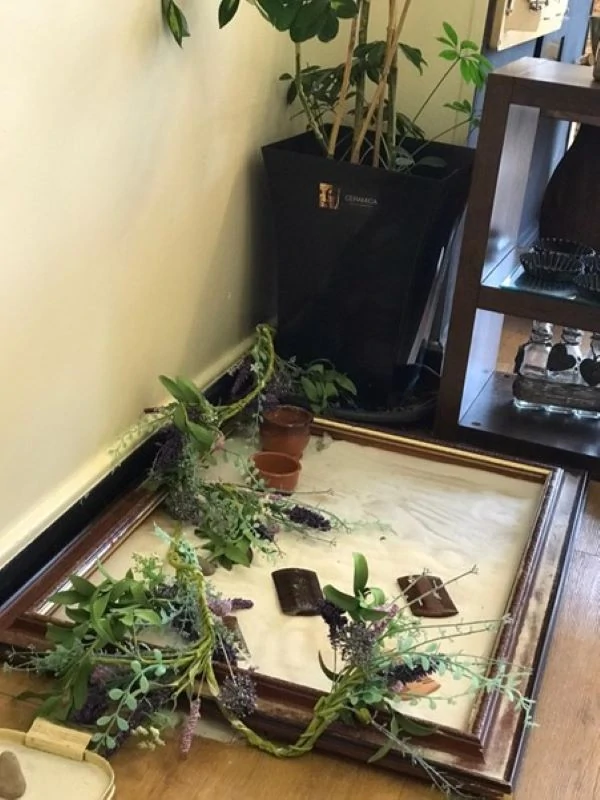
A balance of experiences facilitates shared thinking, including curiosity, exploration, experimentation, and hypothesising.
Children are the directors in their learning, they choose the direction of their play from well-presented resources. As adults, we are the facilitators and scaffolders to their learning. There to support, model and be researchers together in play. Resources should allow flexibility and freedom to transport, move and mix up resources.
Recycling and Reusing
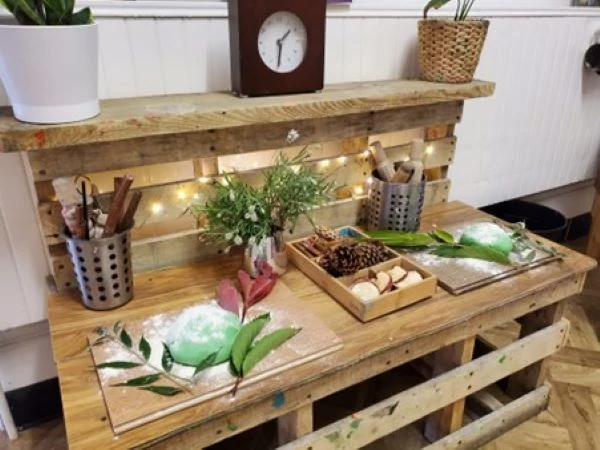
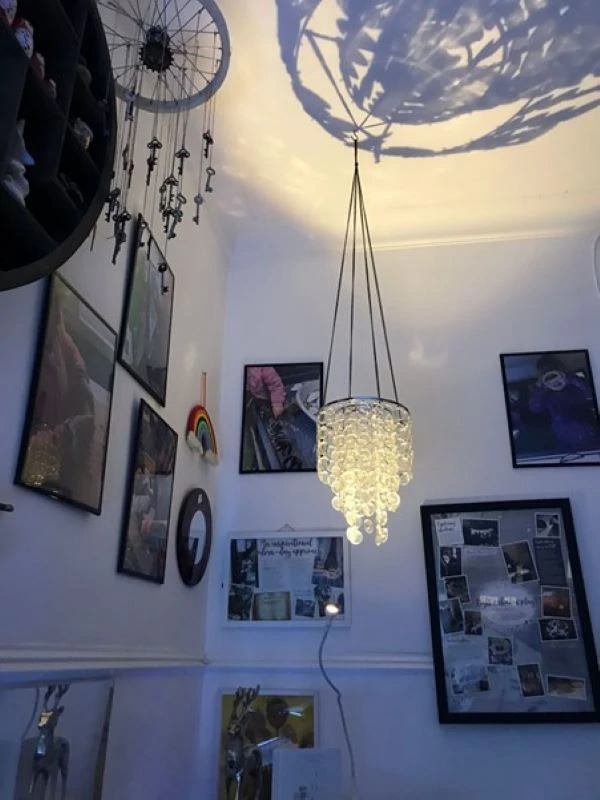
Recycling, rethinking, and repurposing of resources, furniture and equipment promote awareness of sustainable practices.
This provides opportunities for children to problem solve and is creative in ways that develop their respect for the environment and thoughtful use of limited natural resources. The opportunity to experience risk-taking using ceramics and breakables. How can children ever learn consequences if everything is plastic and indestructible?
Eclectic Beautiful Resources
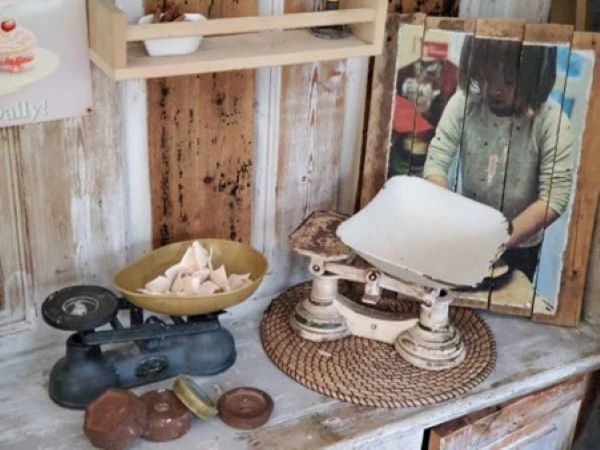
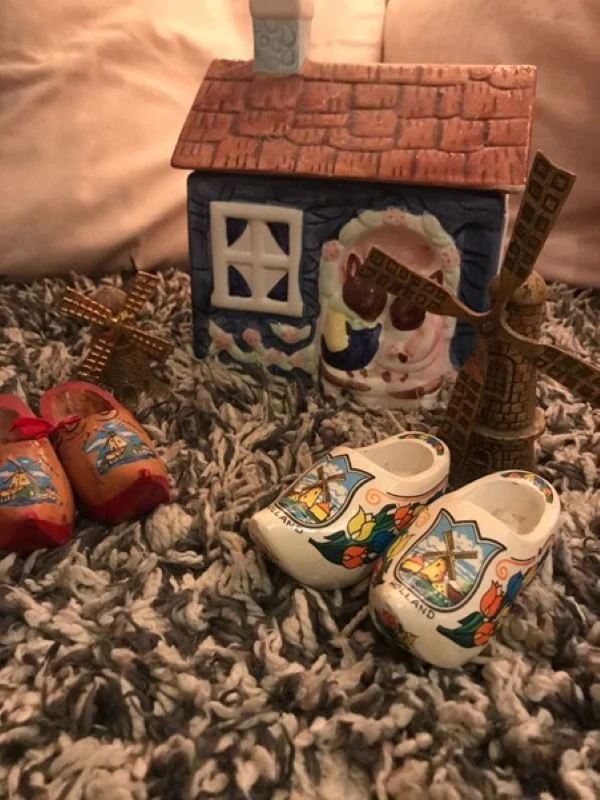
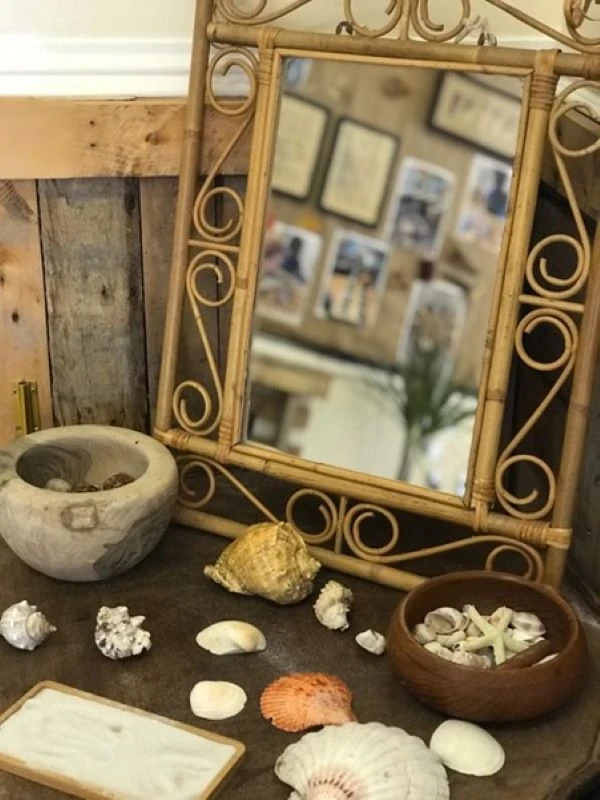
A wide range of diverse and unique resources allowing children to be curious, inquisitive, and engaged.
Providing opportunities to experience real-life resources, adult clothing, handbags and clippy-cloppy shoes, handbags, purses and recycled mobile phones. Recycled pots and pans and kitchen utensils instead of plastic child-sized toys. Toys are pretend! Let’s allow children to re-enact in real-life experience through the use of real-life resources.
Places to tinker and explore
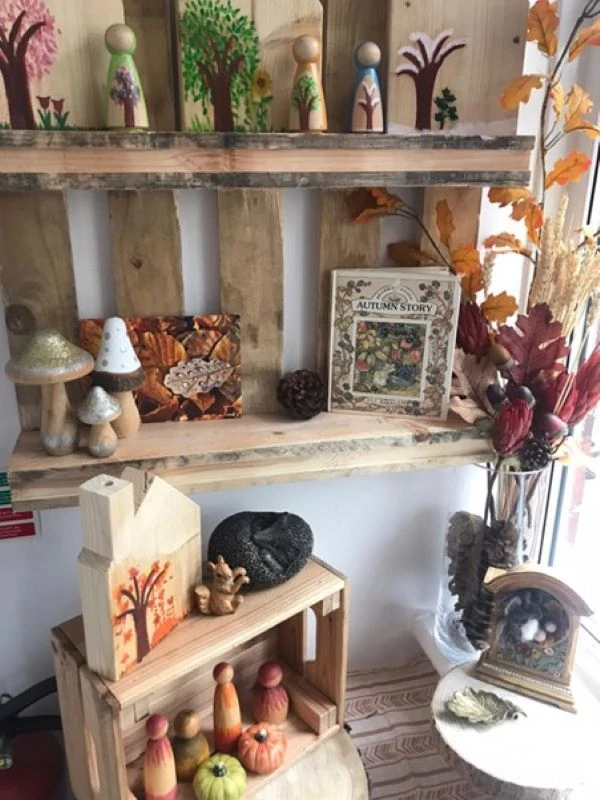
Items resources or authentic materials set up at a child’s height, hidden away in places only a child will discover or find. Thoughtful contributions to any play space. Pockets of awe and wonder.
RETHINK?
Is your environment tired and cluttered? Unloved and uncared for?
What message is this conveying to the children who enter your setting?
Look at your environment with fresh eyes!
At The Curiosity Approach®, we believe that beautiful environments not only benefit the children but the adults also.
For this reason, when adults, parents and carers find themselves in beautiful, magical and wondrous play spaces, environments that are full of wonder, discovery and intrigue, places that feel calm and tranquil, loved and respected, they too feel intrigued, passionate and motivated to become deeply engaged participants in children’s play and learning.
If you want to improve outcomes for children and staff, it is important that, your team are all working together to make a change. That they all understand the importance of an enabling environment for children.
When your team understands what your environment feels like to a child within your setting, they too will be eager to learn. To learn in a positive and happy place that is a delight to develop and grow, both professionally and personally.
Want to know what it looks like through the eyes of a child? Get down to their level and see through their eyes.
- What does it LOOK LIKE?
- HOW does it FEEL?
- Does your environment look inviting from a child’s viewpoint? GET DOWN on the floor and see it from a child’s perspective.
- Do you offer invitations to come to explore, play and be curious as child’s level?
- What can you ACTUALLY SEE?
- How does it actually FEEL? Warm and inviting, or cold, draughty and untidy?
- Is there unswept sand that can be uncomfortable for delicate babies’ knees, or are there soft places to crawl and explore?
- Are items and resources presented at the child level, to capture a child’s attention, to draw them in? A subliminal invitation to be CURIOUS, EXPLORE AND PLAY!
- Perhaps there is trash and clutter shoved under desks away from adults’ view, which is sadly in a child’s eyesight and play vision.
- Look with fresh eyes, what can you see?
Perhaps pockets of your environment need some TLC and you just haven’t noticed! Now is the time to look through the eyes of the child and take a good look at your play spaces.
Children deserve play spaces that reflect how utterly incredible and amazing they are;
– Anita Rui Olds
“Children are miracles. Believing that every child is a miracle can transform the way we design for children’s care. When we invite a miracle into our lives, we prepare ourselves and the environment around us. We may set out flowers or special offerings. We may cleanse ourselves, the space, or our thoughts of everything but the love inside us. We make it our job to create, with reverence and gratitude, a space that is worthy of a miracle! Action follows thought. We can choose to change. We can choose to design spaces for miracles, not minimums.”
References
Carter, Margie (2007). Making Your Environment “The Third Teacher”. Exchange, vol. July/August.
Daly, Lisa; Beloglovsky, Miriam (2016). Inspiring Culturally Sustainable Environments. Redleaf Press.
Featherstone, Sally (2013). Setting the Scene: Creating Successful Environments for Babies and Young Children. Featherstone.
Firlik, Russ (1994). Promoting Development Through Constructing Appropriate Environments: Preschools in Reggio Emilia, Italy. Day Care and Early Education, volume 22, pages 12–20.
Olds, A. (2001). Child Care Design Guide. McGraw-Hill.
